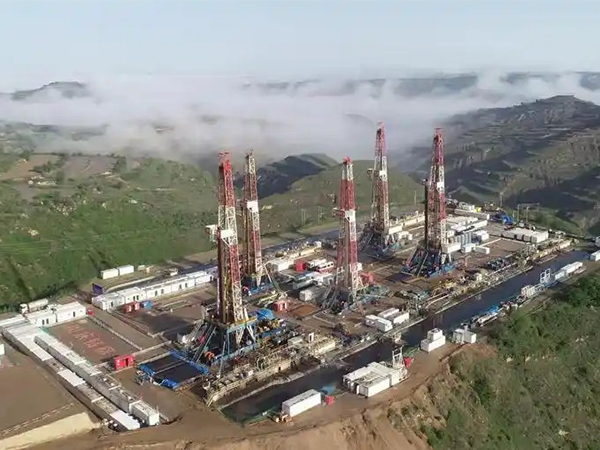NEWS
- News Type
- Industry dynamics
- Company News
- Technical knowledge
Changqing Oilfield Pioneers a New Path for Shale Oil Production Growth

On November 12th, it was learned that a well at the shale oil fracturing site in the main oilfield area of Longdong in Changqing Oilfield successfully completed the carbon dioxide energy-enhanced fracturing operation and simultaneously achieved multiple integrated tests including casing external optical fiber monitoring, wellbore digital data collection, and dual-well microseismic monitoring under the high-temperature and high-pressure environment at a depth of 3,602 meters. Technical data shows that all indicators exceeded the design targets, and the implementation effect was significant.
With this, the first domestic shale oil carbon dioxide energy-enhanced fracturing comprehensive monitoring test site has been officially established, marking an important breakthrough by Changqing Oilfield in the field of shale oil horizontal well carbon dioxide fracturing technology and real-time monitoring. It has opened up a new path for shale oil production increase and provided an important engineering practice basis for the downhole monitoring and intelligent control of volume fracturing in unconventional oil and gas fields in China.
In recent years, the proven reserves of shale oil in Changqing Oilfield have exceeded 1 billion tons, making it an important strategic replacement resource. Actively exploring new fracturing technology for production increase is an important means for the oilfield to accelerate the large-scale development of shale oil. However, there are many challenges to achieving efficient development of shale oil: the low-pressure characteristics of the reservoirs in the main oilfield area are becoming increasingly prominent, seriously affecting the productivity of individual wells; the oilfield operation area is located in a key area for ecological protection of the Yellow River Basin, and the requirements of the state for water resource management and green and low-carbon development are continuously increasing, making traditional fracturing technology difficult to adapt. Relevant experts introduced that the phase state of carbon dioxide in the fracturing process is complex, making it difficult to quantitatively evaluate key mechanisms such as the dynamic evolution of fracture networks and multi-scale flow. Moreover, due to the low viscosity and strong diffusivity of carbon dioxide, its long-distance migration and storage control are difficult, and the engineering technology urgently needs to be upgraded and innovated.
In response to this, Changqing Oilfield, relying on the regional carbon source advantage, focused on three core aspects: the theory of carbon dioxide energy enhancement and production increase, technical models, and process parameters, continuously deepened the research on carbon dioxide fracturing data analysis and production increase mechanisms, and successfully developed the low-pressure shale oil carbon dioxide energy-enhanced regional volume fracturing technology. In response to the technical difficulties of the engineering, the Oil and Gas Process Research Institute formed a carbon dioxide fracturing technology research and innovation team, selected the Heshui South low-pressure high-viscosity area in the Qingcheng Oilfield as the test platform, and multiple chief experts of the oilfield led the technical team to carefully review the fracturing plan and the overall planning of integrated supporting tests. Through precise collection of data such as multi-cluster liquid and sand injection and bottomhole temperature and pressure throughout the process, they successfully upgraded and applied multiple carbon dioxide fracturing monitoring technologies digitally. At the same time, they comprehensively promoted the iteration of various technologies towards green, efficient, and intelligent directions, accelerated the pace of "green oilfield" construction, and injected more "green energy" into the high-quality development of the oilfield.
Up to now, the carbon dioxide energy-enhanced volume fracturing technology, through the integrated application of achievements, has been applied on a large scale in more than 80 wells in the main oilfield area of Changqing Oilfield, with a cumulative injection of 459,000 tons of carbon dioxide and water savings of 1.148 million cubic meters. The cumulative production of individual wells has increased by more than 30% in the stage, and the comprehensive water reduction rate has exceeded 30%, achieving the dual goals of production increase through fracturing and carbon reduction and emission reduction, and becoming a core tool for the efficient development of shale oil.








